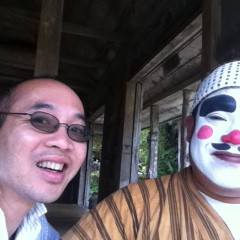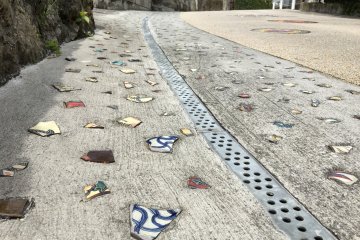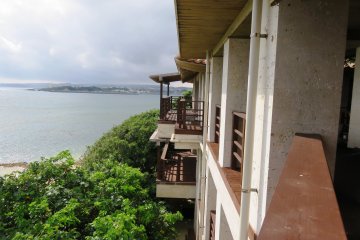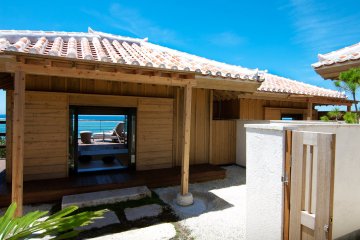Hyakuna Garan is very much a symbol of the resurrection of Okinawa. Located near the epicentre of the Battle of Okinawa, these bleeding hills south east of Naha were, for the post-war generation, a place associated with sadness and destruction.
These days it has been resurrected as a place of peace and reflection, whose name can be translated as a hundred cathedrals or monastic retreats. In centuries past, it was the sacred home of Okinawa, with nearby Sefa-utaki being a sanctuary for the Ryukyu people. Being able to take in the creation story of the Ryukyu Islands from millennia past, it does put into perspective the various tragedies that took place in more recent times, one that calls into reflection the concept of Makuto-soke nankurunaisa, which means do what is expected of you, and things will sort itself out.
Like many reminders of Okinawan heritage that survived the passage of time, this resort looks a bit like an Okinawan fortress from the outside, but it is actually an oasis of calm. Cocoon yourself from the outside world and watch the moon rise over the calm waters of the Philippine Sea, with a 220-degree balcony where you can watch the sunrise and sunset. This is a place to do nothing and relax, hence they don’t have a swimming pool, but the spa or a dip in the ocean will refresh your body all the same without the gym routine.
The theme of adult contemplation is very much an under-current that flows through every element of this boutique resort. There are no large marble lobbies; instead, a discreet reception and quietly spoken staff whisk you to your quarters. Having a small footprint means you are not spending precious moments going cross-country between your room and the spa or the dining quarters; instead, the unhurried pace is more like a temple for the body and mind.
The owner really built a resort for international visitors from the ground up, with four distinct elements:
- Western comfort and Japanese décor, in terms of super comfortable mattresses and zen like minimalism,
- Deep baths with panoramic views, including those on the rooftop terrace that can be reserved for private use,
- Decoration and furniture featuring iconic Japanese elements from Okinawa and the mainland Japan; and
- Evoking a sense of exotica while remaining accessible to those who are not as conversant with Ryukyu culture. It is like reading a favourite novelist’s new book about an exotic location, one that opens new doors for discovery, yet written in a way that you can relate to.
In keeping with its themes of solitude and reflection, there are no banana boats or game centres in this resort. Actually, children are not allowed unless you book the whole resort, which many do for weddings, conferences and retreats.
On the other hand, the private and spacious balconies allow you to take in the sea breezes from the luxury and privacy of your own room, while the stunning floor to ceiling windows and pared-back decoration allow you to focus on the sea views outside. Downstairs there is a gallery of Okinawa art, a veritable museum of Ryukyu history set next to a banyan tree courtyard, one that invites contemplation and appreciation of the creativity of a small kingdom that thrived in the shadow of its larger neighbours.














